Past and future of VIA Technologies x86 CPUs
VIA Technologies started in 1987 was a quite successful company making chipsets and controller chips, it had large market share in Intel and AMD motherboard chipsets where it compete with companies like Nvidia. After Centaur Technology acquisition VIA become a third company with a x86 CPU license but was unable to grow to the size of Intel or even AMD. Nowadays VIA is returning to the news stories with a Chinese child-company called Zhaoxin that claims to be releasing modern x86 CPU competing even with AMD Threadripper.
Let's see what VIA had done in the past and what it may foretell for the future of x86 CPU market.
What's so special about x86 CPUs?
CPUs made for the x86 architecture power your PC, laptops or even some consoles and are used in servers world wide - and only AMD and Intel can make them as only those companies have the license for it. Those and VIA that most of the people already have forgotten (and there was some legal turmoil about their license).
Intel made the x86 architecture, then AMD extended it to a 64-bit design as x86_64 and both companies cross-licensed both pieces. Other companies like Qualcomm trying to emulate x86_64 instructions in their ARM chips find legal obstacles - so laptops running x86 Windows on ARM CPU has some legal
performance disadvantage. And so having a x86 license is kind of big deal, even if you can't make a competing product on your own.
Zhaoxin
Zhaoxin is a VIA-China joint venture company where VIA brings the license and know-how while Chinese side provides funding and even more technical support and know-how. Due to x86 license it has to stay within companies own by VIA (or AMD as they did similar thing for their Epyc processors).
Zhaoxin CPUs are intended for Chinese market, some even were announced as launched but no one seen them yet, so bold performance claims of upcoming generations are still unchecked. If the performance will be good it's rather likely we will see them outside of China.
For a consumer 3 companies competing is better than 2. AMD having problems with making good products gave Intel the monopoly for many years and when AMD Zen launched - suddenly we got way better products from both companies at better prices.
Very old CPUs
Netbook users may remember VIA from some of models available back then
and even Nettop users may remember Zotac VD01. For few years VIA had their CPUs on a consumer market and in that nettop/netbook niche it did rather well for some time. Before this market even emerged it was focused at mini ITX and smaller systems, including embedded and industry level boards.
For VIA small low power chips were the best the company had to offer, while entering Intel Atom chips were a novelty in a large portfolio of much bigger and more powerful chips. VIA CPUs having less than 1% of the x86 market made the business not very profitable and the company pretty much vanished from consumer market.
Last consumer devices with VIA CPUs that can be seen from time to time on ebay and alike are dual and quad core Nano based chips. Before that the company had their C7 and C3 single core 32-bit chips. It's obvious that after close to 10 years of development modern chips will be vastly better - but by how much and also - how old VIA chips hold today versus similarly old chips from competitors?
Test platforms
Most of consumer VIA hardware was Windows XP ready, some even seen Windows Vista. What will happen when we try to use Windows 10, 8.1 or modern Linux distributions? And not forget SSDs or modern graphics cards.
I managed to get two motherboards to do some testing - Biostar Viotech 3200+ with a single core 32-bit VIA C7-D and a x8 PCIe 2.0 slot. Second board, VIA VE-900, does not have a PCIe slot but has a dual core 64-bit VIA Nano X2 L4050.
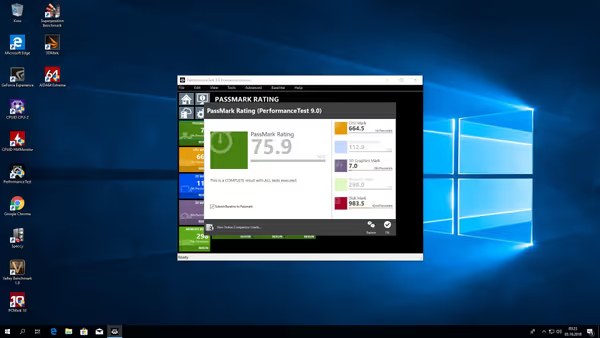
Biostar Viotech 3200+
Viotech 3200+ has a nice gaming box and features a VIA C7-D 1.8 GHz CPU, supports DDR3 800/1066 MHz and has two SATA II (not III) ports. We can't forget about four USB 2.0 ports and that x8 PCIe 2.0 slot - all in micro-ATX form factor.
The CPU is equipped with a radiator and a very very small fan that barely makes any airflow - so it's load and hot. When turning on the system it can hang on the splash screen when new USB devices like DVD-Drives or USB Flash drives appear. The solution is to run it without them once, connect and reboot.
All those gaming features also include overclocking. Even today on CPU-Z scoreboards you can see some freshly overclocked C7-Ds beyond 2GHz!
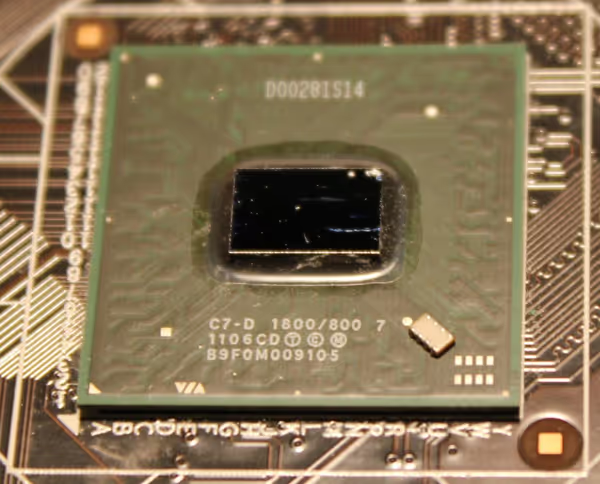
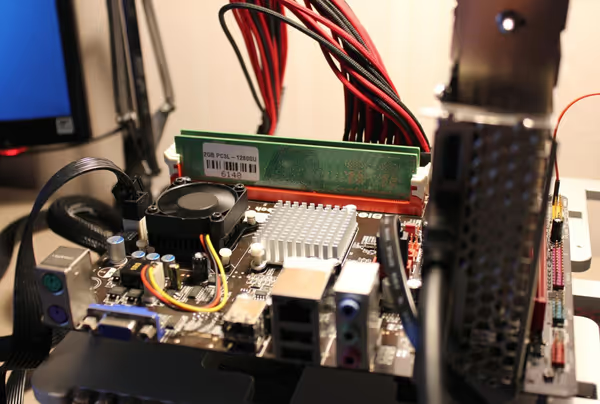
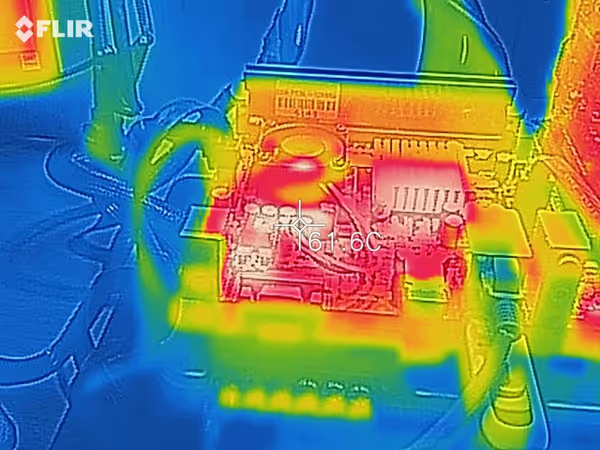
32-bit Windows 10 installer did tried to run but were restarting after a while. Windows 8.1 did install successfully. I had some problems with Xubuntu 18.10 where it would fail to start the system - so I had to use bit older distribution - MX Linux, also based on Debian. That did work.
As this is an ancient single core CPU most of the apps and even websites wasn't best performer in terms of UI interactivity. Yet some benchmarks did manage to run. Due to 32-bit not every high-end benchmark would run. Userbenchmark, so easy
to run and not very efficient for high end modern systems had to struggle.

VIA VE-900
VIA VE-900 is a mini ITX board with a dual core 64-bit CPU followed by a VIA C-9 HD integrated graphics with DX9 acceleration and decoding support for VC1, MPEG-2, WMV9 and H.264. We also have four USB 2.0 ports, VGA and HDMI output. There is only a PCI slot so no modern GPU could be connected.
This board was less problematic and even Windows 10 did run easily. Due to lack of dGPU only basic test could be run.
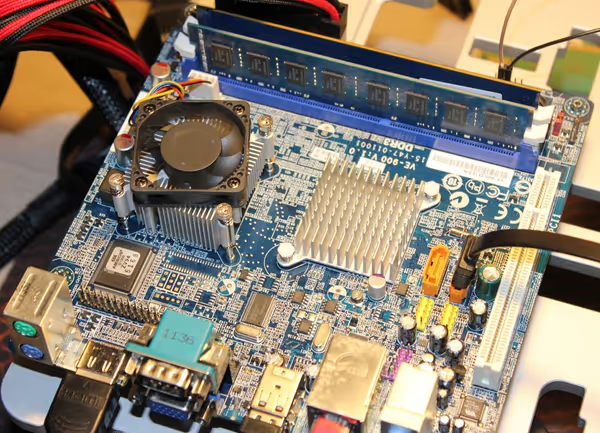
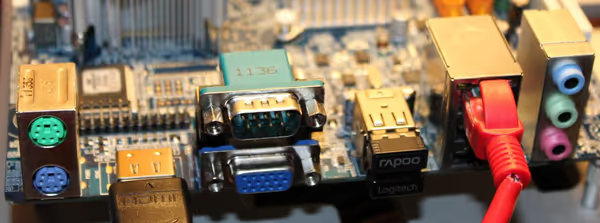
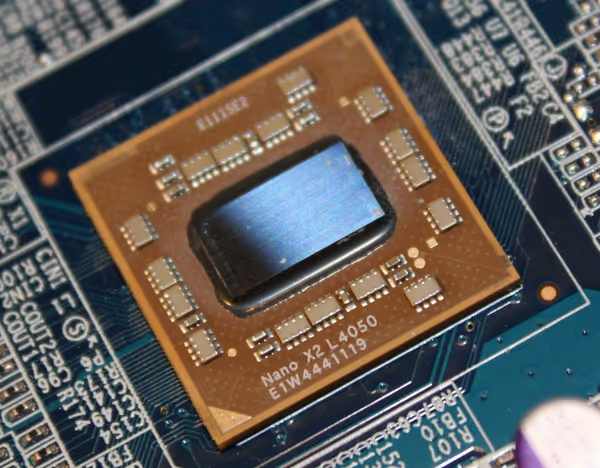
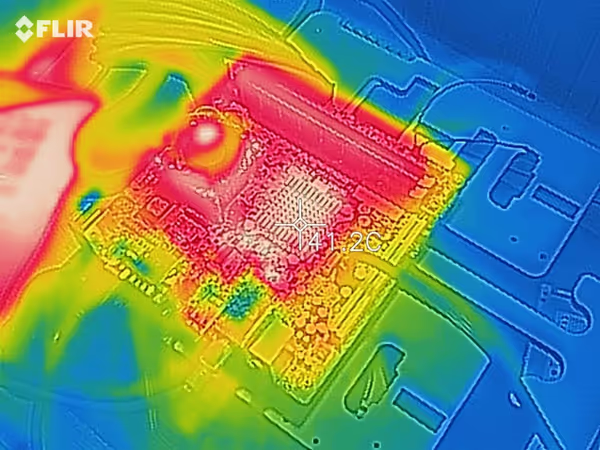
Benchmarking after ten years
If you look for benchmarks from back then you can see than Atoms and VIA CPUs were quite even for some time. 720p playback and Windows XP - those were the times...
As I had some other benchmarks lying around I added them to the Linux benchmarks, but I also included AMD E-350 a very similar and very popular low end CPU from back then. Current generation is represented by the best of the best - Pentium J5005.
| VIA C7-D 1800 | VIA Nano X2 L4050 | AMD E-350 | Intel Pentium J5005 | |
|---|---|---|---|---|
| Release year | 2006 | 2009 (?) | 2011 | 2017 |
| CPU type | 32-bit 1 x 1500 MHz | 64- bit 2 x 1400 MHz | 64- bit 2 x 1600 MHz | 64- bit 4 x 1500 - 2800 MHz |
| Technology node | 90 nm | 40 nm | 40 nm | 14 nm |
| Die size | 30 mm2 | 66 mm2 | 75 mm2 | ? |
| TDP | 20 W | ? | 18 W | 10 W |
| iGPU | Chrome9 HC (?) | Chrome9 HD | Radeon HD 6310 | UHD Graphics 605 |
| Benchmark results |
|
|
||
| Comparative benchmarks | ||||
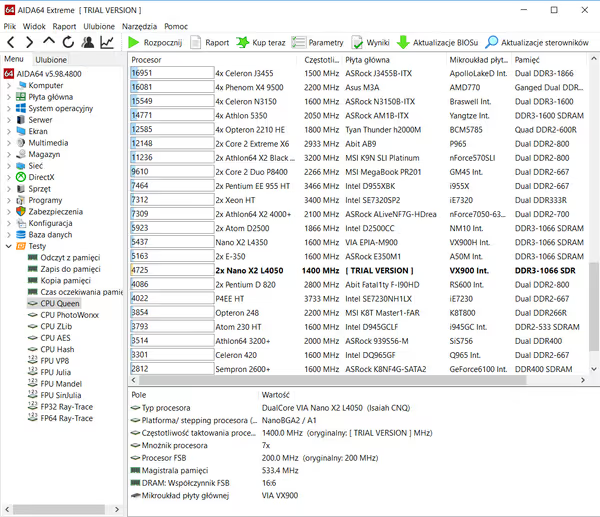
Below I've attached few Phoronix Linux benchmarks:
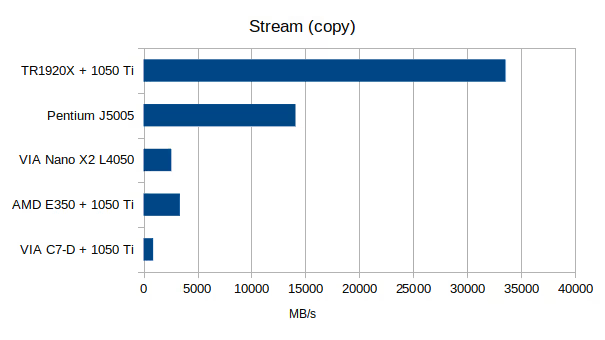
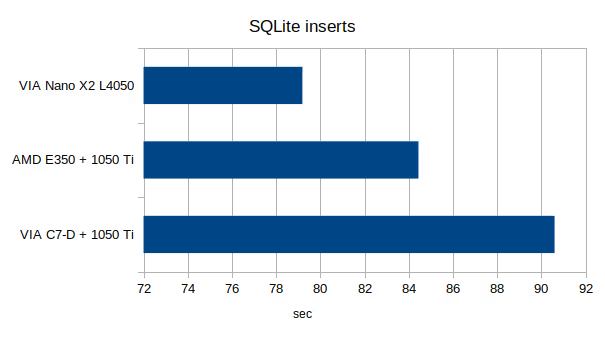
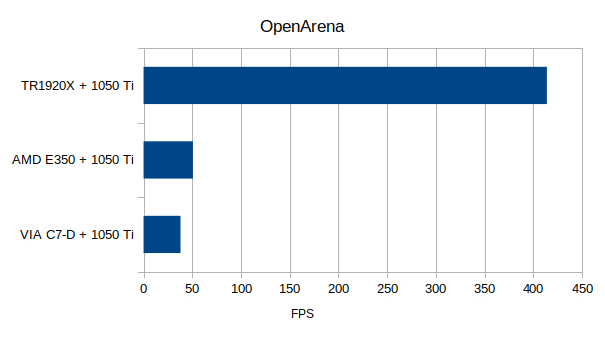
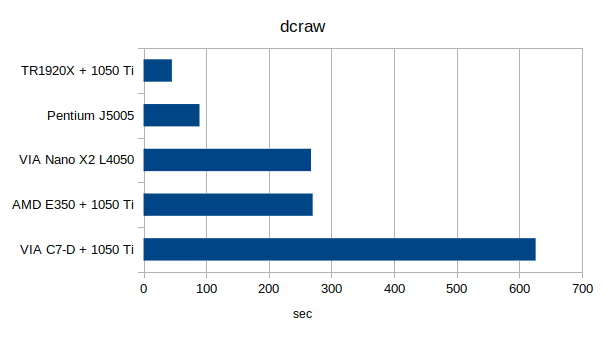
The RAM benchmark results will depend on memory used but in those VIA and AMD systems the same 2 x 2GB kit was used. So the performance comes down to memory controller frequency and general efficiency as well as available single/dual memory channels. Faster memory access can allow for faster CPU performance. Those 3 old systems used lowly DDR3 while Pentium and Threadripper do support latest DDR4 memories.
SQLite benchmark is often limited by write barrier performance of a storage device. As all systems used the same device then it's mostly comes down to CPU performance (and SATA controller following the spec). There is no modern SATA III or NVMe support on old systems - which for raw write/read speeds would be clearly superior to SATA II.
OpenArena is a simple shooter, that even can run on better iGPUs. GTX 1050 Ti was added as dedicated GPU to see how much such old CPU would limit the performance at 1080p. As you can see threadripper allows to reach more than 400 FPS. AMD and VIA old CPUs do show their limitations... although the game still runs.
Dcraw converts NEF RAW images to PPM format and is a CPU based benchmark.
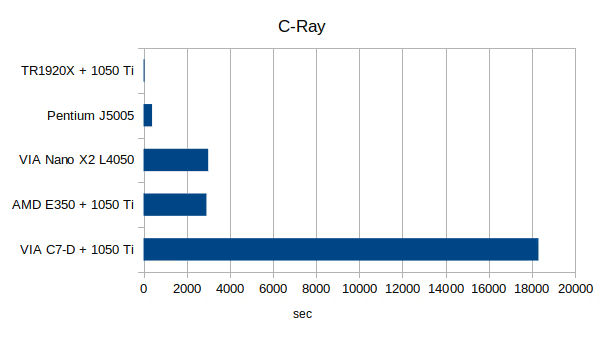
VIA greatest achievement was the Nano line. Intel developing their Atom chips at some point assumed they would have to compete with C7 VIA chips - but that turned out to not be the case. VIA made a much sophisticated CPU design with out-of-order execution - features found in top of the line Intel CPUs but not in Intel Atoms. So for some time VIA had a lead. The floating point performance improvement may be an example of that.
Although I couldn't gather all the data I wanted some benchmarks show that a dual core VIA CPU can be on par with AMD E-350 - a bit bigger and released later APU. Kind of shows that although VIA did not got the market they did had the technical capability to make actual working products.
Pentium J5005 surpasses it predecessors from 7-8 years ago usually by few times. Taking into account architectural improvements and vastly better 14nm node this shouldn't be a surprise. ARM chips in our phones or tables can be even bigger and even more powerful while still fitting that low power and somewhat low cost category.
VIA is an interesting company. They had the skill, they made some errors that cost them market share, but right now with money and the Chinese market itself they may make a very interesting products that journalists and analysts will be very keen to check out. Will it happen? We will have to see.
Comment article